Nanook of the North
9 /10 1 Votes9
100% Rotten Tomatoes 8.5/10 Top Documentary Films Genre Documentary Initial DVD release January 26, 1999 Country United States | 7.8/10 IMDb 4/4 Roger Ebert Duration | |||||||||||||||||||||||||||||||||
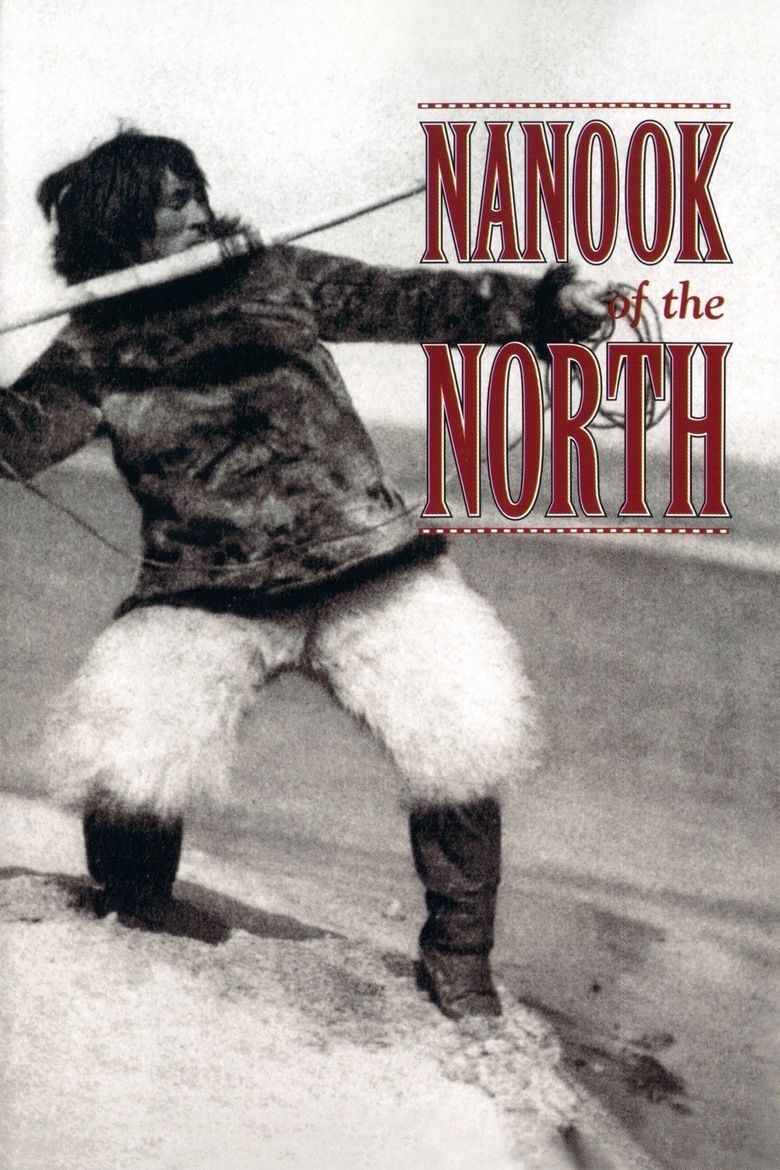 | ||||||||||||||||||||||||||||||||||
Language Silent filmEnglish intertitles Release date June 11, 1922 (1922-06-11) Cast Allakariallak (Nanook), Nyla (Nanook's wife, the smiling one), Cunayou (Nanook's wife), Allee (Nanook's son), Allegoo (Nanook's son)Similar movies Netsilik Eskimos, VIII: Jigging for Lake Trout , Greenland, 1914 , Netsilik Eskimos, IV: Group Hunting on the Spring Ice , Netsilik Eskimos, I: At the Autumn River Camp , Netsilik Eskimos, II: At the Caribou Crossing Place , Netsilik Eskimos, III: At the Spring Sea Ice Camp | ||||||||||||||||||||||||||||||||||
Nanook of the North (also known as Nanook of the North: A Story Of Life and Love In the Actual Arctic) is a 1922 American silent documentary film by Robert J. Flaherty, with elements of docudrama, at a time when the concept of separating films into documentary and drama did not yet exist.
Contents
- Plot
- Development
- Filming
- Controversies
- Building of the igloo
- Visit to the trade post of the white man
- Hunting of the walrus
- Reception
- Legacy
- Home media
- Literature and publications
- Music
- Film
- Television
- References

In the tradition of what would later be called salvage ethnography, Flaherty captured the struggles of the Inuk man named Nanook and his family in the Canadian Arctic. The film has been incorrectly considered the first feature-length documentary. Some have criticized Flaherty for staging several sequences, but the film is generally viewed as standing "alone in its stark regard for the courage and ingenuity of its heroes."
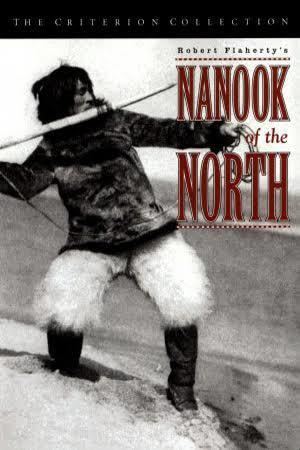
In 1989, Nanook of the North was one of the first 25 films to be selected for preservation in the United States National Film Registry by the Library of Congress as being "culturally, historically, or aesthetically significant".

Plot
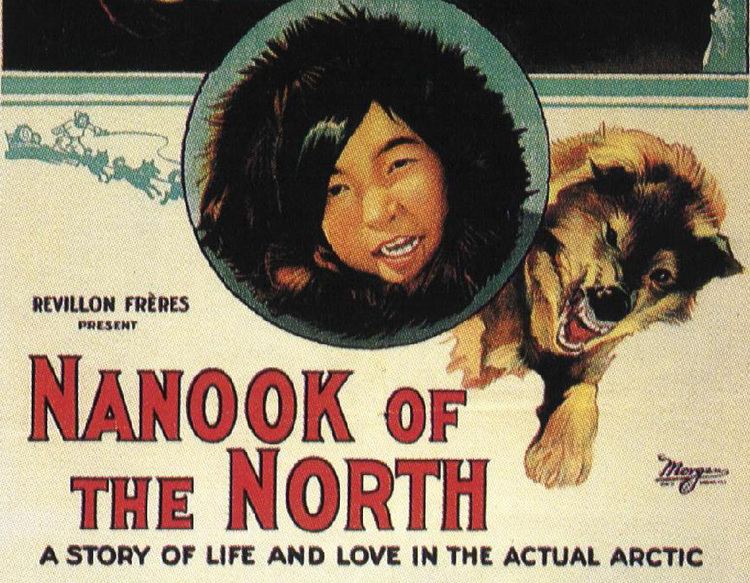
The documentary follows the lives of an Inuk, Nanook, and his family as they travel, search for food, and trade in the Ungava Peninsula of northern Quebec, Canada. Nanook; his wife, Nyla; and their family are introduced as fearless heroes who endure rigors "no other race" could survive. The audience sees Nanook, often with his family, hunt a walrus, build an igloo, go about his day, and perform other tasks.
Development
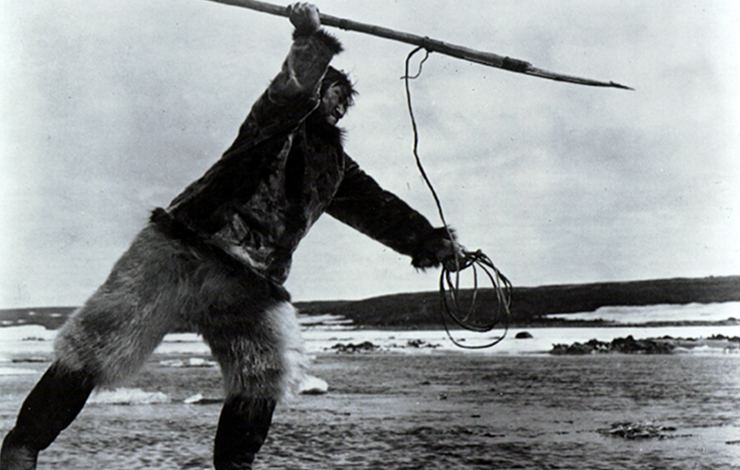
In 1910 Flaherty was hired as an explorer and prospector along the Hudson Bay for the Canadian Pacific Railway. Learning about the lands and people there, Flaherty decided to bring a camera with him on his third expedition in 1913, but knowing nothing about film, Flaherty took a three-week course on cinematography in Rochester, New York
Filming
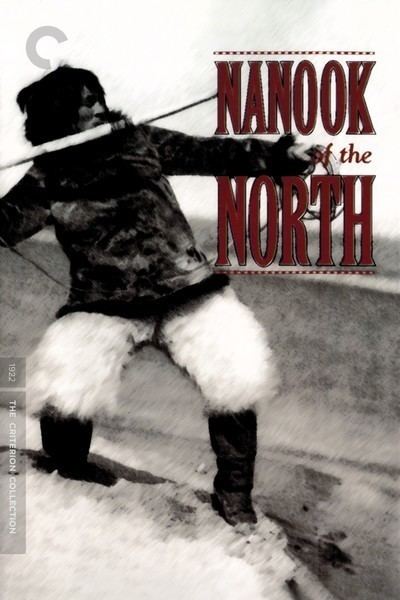
Using a Bell & Howell camera, a portable developing and printing machine, and some lighting equipment, Flaherty spent 1914 and 1915 shooting hours of film of Inuit life. By 1916, Flaherty had enough footage that he began test screenings and was met with wide enthusiasm. However, in 1916, Flaherty dropped a cigarette onto the original camera negative (which was highly flammable nitrate stock) and lost 30,000 feet of film. With his first attempt ruined, Flaherty decided to not only return for new footage, but also to refocus the film on one Eskimo family as he felt his earlier footage was too much of travelogue. Spending four years raising money, Flaherty was eventually funded by French fur company Revillon Frères and returned to the North and shot from August 1920 to August 1921. As a main character, Flaherty chose the celebrated hunter of the Itivimuit tribe, Allakariallak. The full collaboration of the Inuit was key to Flaherty's success as the Inuit were his film crew and many of them knew his camera better than he did.
Controversies
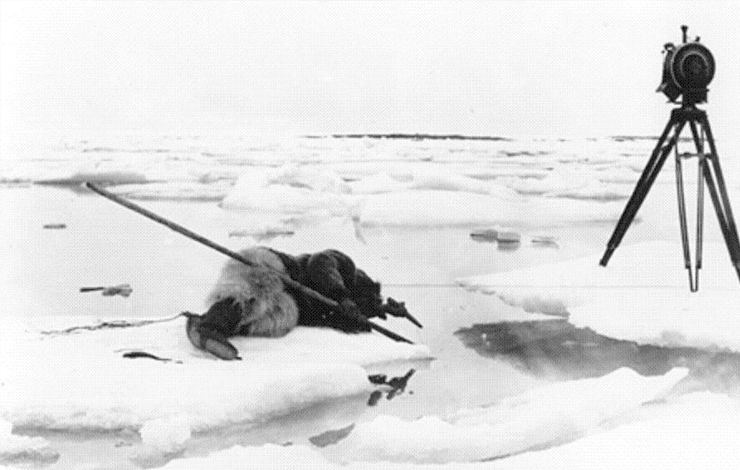
Flaherty has been criticized for deceptively portraying staged events as reality. "Nanook" was in fact named Allakariallak (pronounced [al.la.ka.ɢi.al.lak]), while the "wife" shown in the film was not really his wife. According to Charles Nayoumealuk, who was interviewed in Nanook Revisited (1990), "the two women in Nanook - Nyla (Alice [?] Nuvalinga) and Cunayou (whose real name we do not know) were not Allakariallak's wives, but were in fact common-law wives of Flaherty." And although Allakariallak normally used a gun when hunting, Flaherty encouraged him to hunt after the fashion of his recent ancestors in order to capture the way the Inuit lived before European influence. On the other hand, while Flaherty made his Inuit actors use spears instead of guns during the walrus and seal hunts, the prey shown in the film were genuine, wild animals. Flaherty also exaggerated the peril to Inuit hunters with his claim, often repeated, that Allakariallak had died of starvation two years after the film was completed, whereas in fact he died at home, likely of tuberculosis.
Building of the igloo
The building of the igloo is one of the most celebrated sequences in the film, but interior photography presented a problem. Building an igloo large enough for a camera to enter resulted in the dome collapsing, and when they finally succeeded in making the igloo it was too dark for photography. Instead, the images of the inside of the igloo in the film were actually shot in a special three-walled igloo for Flaherty's bulky camera so that there would be enough light for it to capture interior shots.
Visit to the trade post of the white man
In the "Trade Post of the White Man" scene, Nanook and his family arrive in a kayak at the trading post and one family member after another emerge from a small kayak, akin to a clown car at the circus. Going to trade his hunt from the year, including the skins of foxes, seals, and polar bears, Nanook comes in contact with the white man and there is a funny interaction as the two cultures meet. The trader plays music on a gramophone and tries to explain how a man 'cans' his voice. Bending forward and staring at the machine, Nanook puts his ear closer as the trader cranks the mechanism again. The trader removes the record and hands it to Nanook who at first peers at it and then puts it in his mouth and bites it. The scene is meant to be a comical one as the audience laughs at the naivete of Nanook and people isolated from Western culture. In truth, the scene was entirely scripted and Allakariallak knew what a gramophone was.
Hunting of the walrus
It has been pointed out that in the 1920s when Nanook was filmed, the Inuit had already begun integrating the use of Western clothing and were using rifles to hunt rather than harpoons, but this does not negate that the Inuit knew how to make traditional clothing from animals found in their environment, could still fashion traditional weapons and were perfectly able to make use of them if found to be preferable for a given situation.
The film is not technically sophisticated; how could it be, with one camera, no lights, freezing cold, and everyone equally at the mercy of nature? But it has an authenticity that prevails over any complaints that some of the sequences were staged. If you stage a walrus hunt, it still involves hunting a walrus, and the walrus hasn't seen the script. What shines through is the humanity and optimism of the Inuit.
Flaherty defended his work by stating that a filmmaker must often distort a thing to catch its true spirit. Later filmmakers have pointed out that the only cameras available to Flaherty at the time were both large and immobile, making it impossible to effectively capture most interior shots or unstructured exterior scenes without significantly modifying the environment and subject action.
Reception
As the first "nonfiction" work of its scale, Nanook of the North was ground-breaking cinema. It captured many authentic details of a culture little-known to outsiders, and was filmed in a remote location. Hailed almost unanimously by critics, the film was a box office success in the United States and abroad. In the following years, many others would try to follow in Flaherty's success with "primitive peoples" films. In 2005 film critic Roger Ebert described the film's central figure, Nanook, as "one of the most vital and unforgettable human beings ever recorded on film." In a 2014 Sight and Sound poll, film critics voted Nanook of the North the seventh best documentary film of all time.
Legacy
At the time, few documentaries had been filmed and there was little precedent to guide Flaherty's work. Since Flaherty's time, staging, attempting to steer documentary action, or presenting re-enactment as naturally captured footage has come to be considered unethical.
In its earliest years (approx. 1895–1902), film production was dominated by actualities—short pictures of real people in real places. Robert Flaherty’s great innovation was simply to combine the two forms of actuality, infusing the exotic journey with the details of indigenous work and play and life.
Home media
In 1999, Nanook of the North was digitally remastered and released on DVD by The Criterion Collection. It includes an interview with Flaherty's widow (and Nanook of the North co-editor), Frances Flaherty, photos from Flaherty's trip to the arctic, and excerpts from a TV documentary, Flaherty and Film. In 2013, Flicker Alley released a remastered Blu-ray version that includes six other arctic films.
Literature and publications
Music
Film
Television
References
Nanook of the North WikipediaNanook of the North IMDbNanook of the North Rotten TomatoesNanook of the North Roger EbertNanook of the North Top Documentary FilmsNanook of the North themoviedb.org
